The Secret Of The Cottingley Fairies: How A Simple Photo Hoax Even Fooled Sherlock Holmes’s Creator
In the late 19th and early 20th centuries, the world was reeling from the devastation of conflicts like the U.S. Civil War and World War I.
With so much loss, people began searching for answers beyond the physical world. This curiosity sparked the spiritualist movement, where many were eager to believe in the supernatural.
During this time, several famous hoaxes captured the public’s imagination, and one of the most fascinating was the Cottingley Fairies.
Photos that appeared to show real fairies in the garden quickly gained attention, deceiving not only the public but also photography experts and prominent spiritualists.
Even Sir Arthur Conan Doyle, the creator of the logical detective Sherlock Holmes, was taken in by the hoax. But how could a man known for his sharp, skeptical mind be fooled?
The start of a prank

In the summer of 1917, nine-year-old Frances Griffiths and her mother moved to Cottingley, England, to live with Frances’ 16-year-old cousin, Elsie Wright, and her family.
The Wrights’ home was nestled in a charming, wooded area near a garden stream called Cottingley Beck. Frances and Elsie quickly became inseparable; they often spent their days playing by the stream.

One day, after returning from their usual adventures by the stream, the girls were scolded for being covered in mud. In their defense, Frances and Elsie claimed they had been “to see the fairies.”
To prove their story, they borrowed a camera and headed back to the stream, where they captured the first of what would become the famous “Cottingley Fairies” photographs.
The photos that enchanted England

When Elsie’s father, Arthur Wright, developed the film from the girls’ adventure, he was surprised to find a photo of little Frances posing with four winged fairies in the garden.
Arthur immediately suspected that the girls had somehow staged the photograph. But the girls were undeterred by his doubt. To provide even more “evidence,” they soon snapped another photo, this time with Elsie posing alongside a fairy.
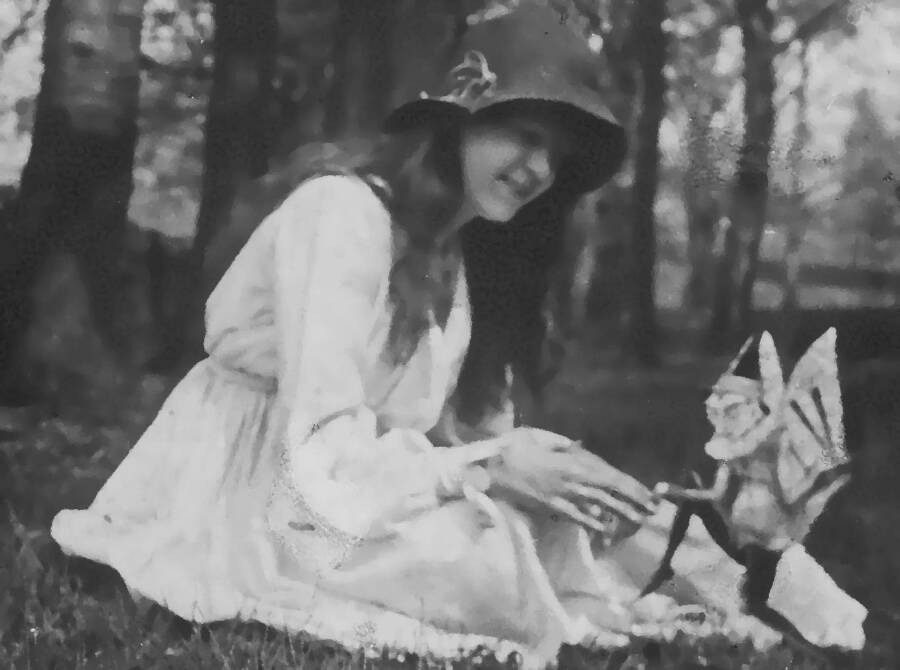
While Arthur remained doubtful, Elsie’s mother, Polly, saw things differently. Polly had a keen interest in the spiritualist movement, which was gaining traction during the late 19th and early 20th centuries.
Excited by the thought that the photos might be real, Polly decided to show them to local spiritualist groups. In 1919, she brought the images to a meeting of the Theosophical Society in Bradford, where one of the group’s leaders, Edward Gardner, was amazed by what he saw.

To Gardner, the Cottingley Fairies photos weren’t just interesting pictures—they were proof of the spiritualist belief that humanity was experiencing a profound spiritual change.
Fully convinced that the photos were real, he started using them as strong evidence in his lectures on spiritualism.
To further bolster the credibility of the photos, Gardner took them to photography expert Harold Snelling for authentication. Snelling confirmed that the images were “entirely genuine.”

With this endorsement, the images spread rapidly across England, and by 1920, they had captured the attention of Sir Arthur Conan Doyle, the famed author of “The Adventures of Sherlock Holmes” and a devout believer in spiritualism.
How Conan Doyle was deceived

Sir Arthur Conan Doyle was working on a story about fairies for “The Strand” magazine when he first came across the Cottingley Fairies. Captivated by the images, he reached out to the Wright family for permission to use the photos in his article.
Initially, Conan Doyle was skeptical about the authenticity of the photos. However, as Dr. Merrick Burrow from the University of Huddersfield explains, Conan Doyle believed that if the photos were genuine, they could have a profound impact.
“If these photos proved the existence of fairies, and that you could photograph the supernatural, then they were a staging post in the argument for spiritualism,” Burrow noted.
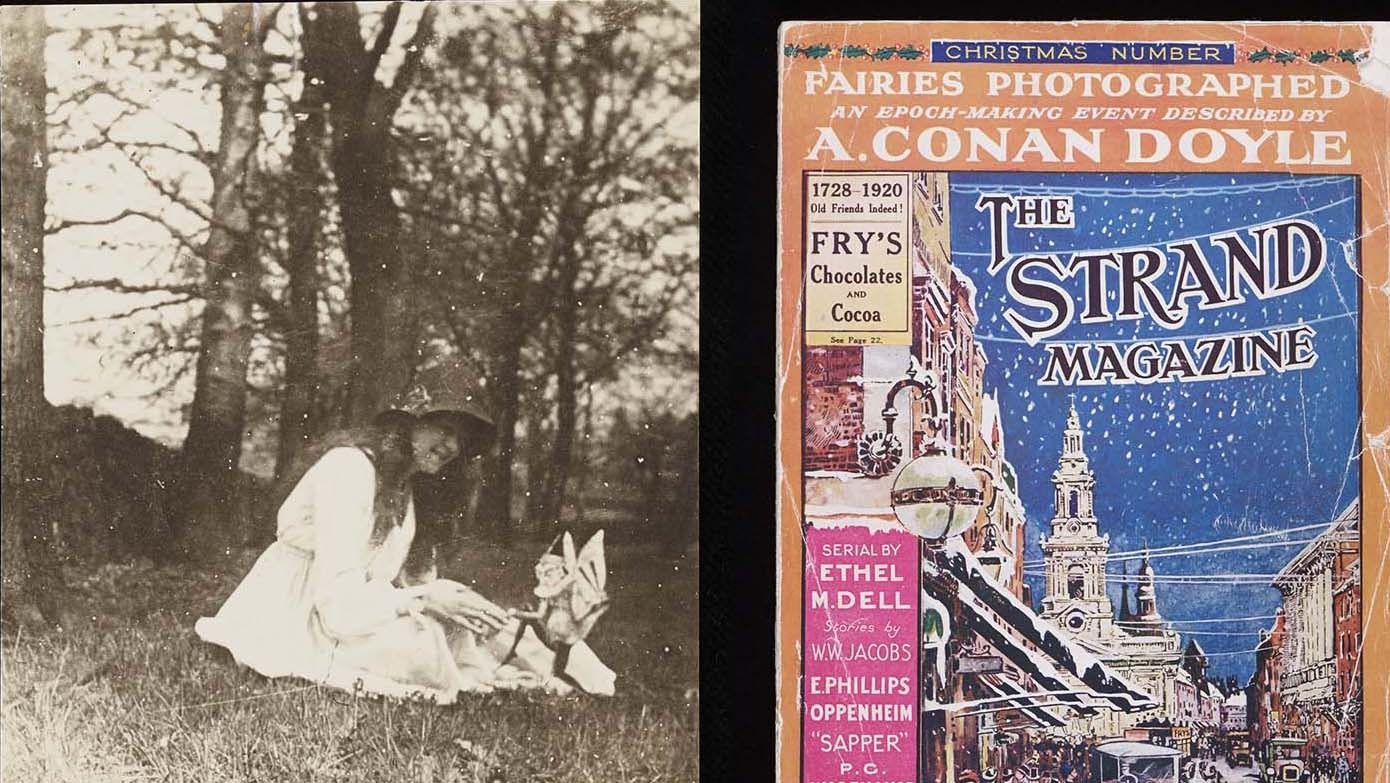
After consulting with several experts, Conan Doyle concluded that the photos were likely real. In his December 1920 article, he stated, “after carefully going into every possible source of error, a strong prima facie case has been built up” for their authenticity.
He further stated, “The recognition of their existence will jolt the material twentieth-century mind out of its heavy ruts in the mud, and will make it admit that there is a glamour and a mystery to life.
Having discovered this, the world will not find it so difficult to accept that spiritual message supported by physical facts which has already been so convincingly put before it.”
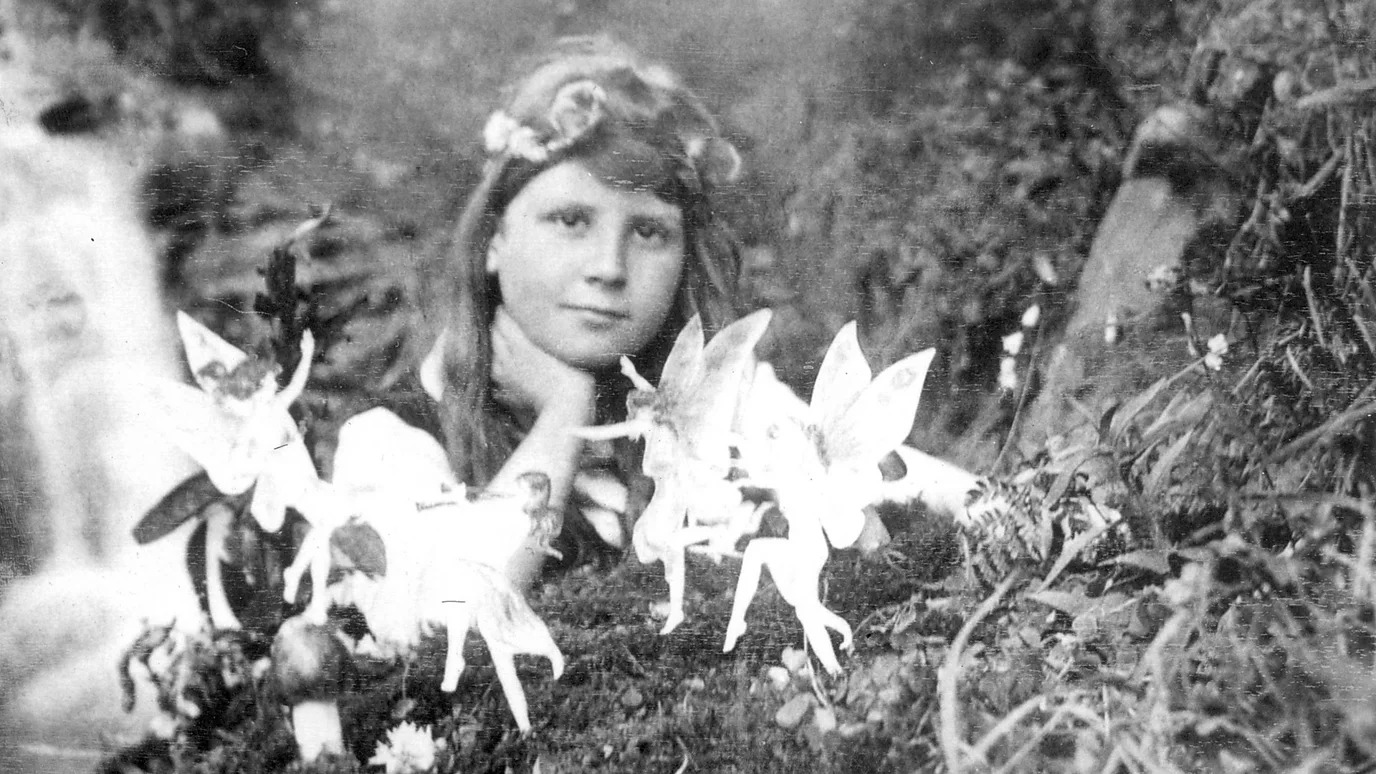
The article was a hit, gaining popularity in the United States and Australia. As the Cottingley Fairies became an international sensation, Elsie Wright and Frances Griffiths were given their own cameras and asked to take more photos in 1921.
They did and rounded the series out with a total of five images. What started as a playful family prank had now turned into one of history’s most famous photo hoaxes.
“There are lots of ways in which the story remains interesting,” says Dr. Burrow. “There are so many layers to it, but the Conan Doyle connection is still gripping, especially considering the irony of the creator of Sherlock Holmes endorsing these photographs.”
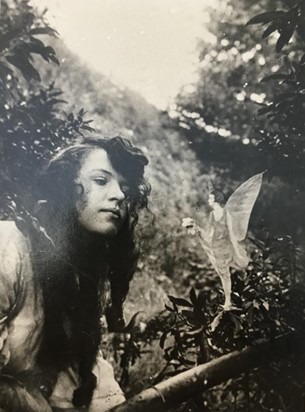
Dr. Burrow finds it particularly intriguing that two young girls from a quiet, rural area were able to deceive someone as renowned and sharp as Conan Doyle.
“The idea that two young kids from a rural backwater pulled the wool over Conan Doyle’s eyes, that there was a sophisticated hoax masterminded by these two children is intriguing and fascinating.”
It’s ironic that Conan Doyle, who created Sherlock Holmes—a character known for his rational, scientific approach to solving even the most puzzling cases—would fall so deeply into believing in the Cottingley Fairies.
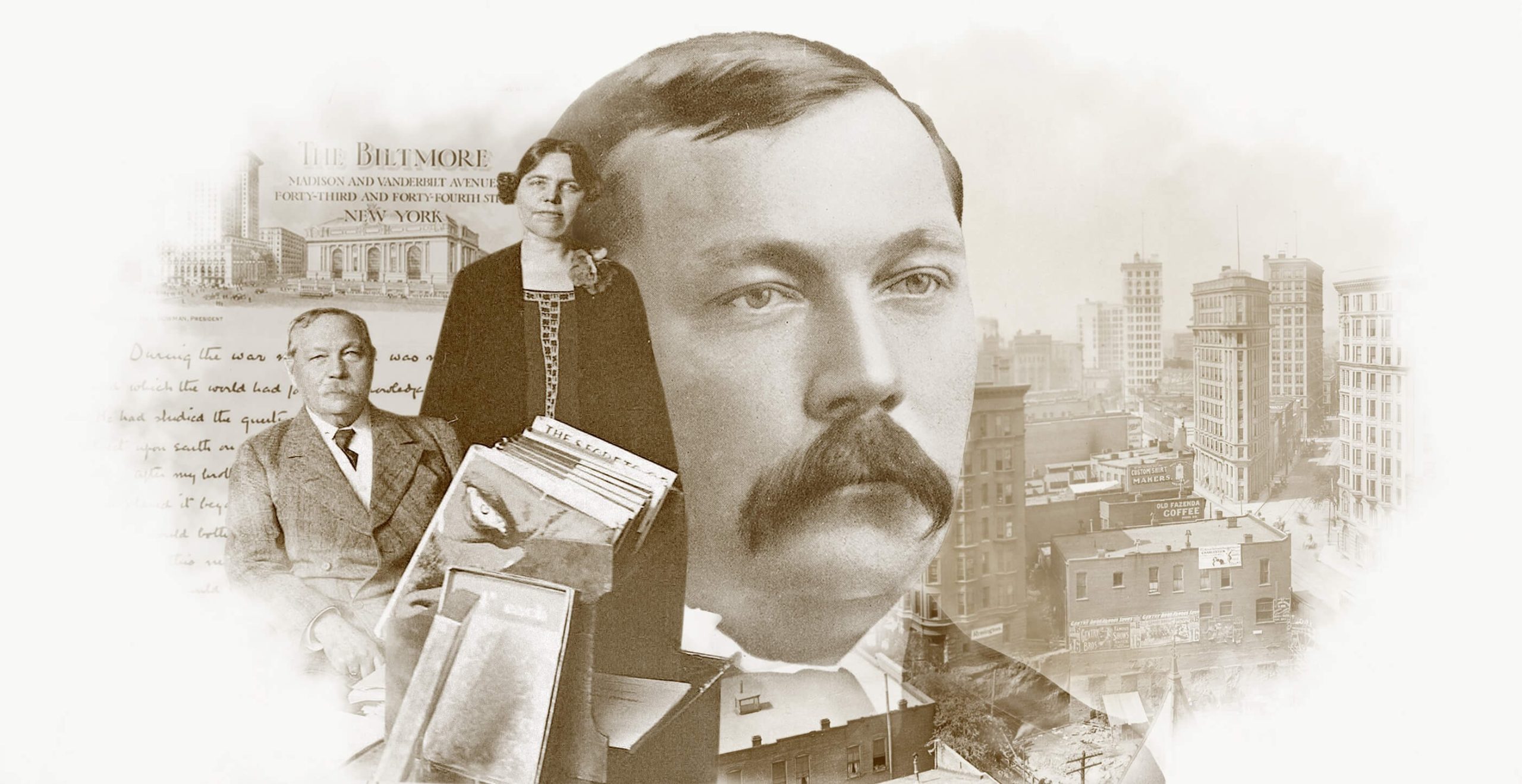
Holmes himself dealt with mysteries tinged with the supernatural, like in The Hound of the Baskervilles, but always relied on logic and reason.
However, Conan Doyle’s strong belief in spiritualism made him fiercely defend his views, even when confronted with skepticism, as in the case of the Cottingley hoax.
The rise of spiritualism in Europe and the U.S
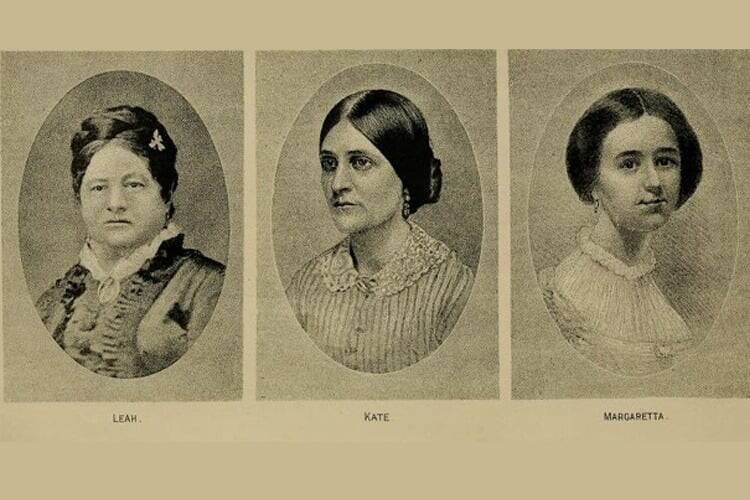
The story of how the Cottingley Fairies photographs came to be is closely tied to the rise of the modern spiritualism movement.
This movement began in the 1840s during the Second Great Awakening, a Protestant religious revival in the United States. Spiritualism was fueled by the belief that life continued after death and that the living could communicate with spirits.
Key figures in the early spiritualist movement included Emanuel Swedenborg, Andrew Jackson Davis, and the Fox sisters—Leah, Kate, and Maggie—from New York.
The Fox sisters became famous for their séances, where participants would hear knocks and other sounds believed to be made by spirits.
These dramatic, sensory experiences captivated the American public and fueled the spread of spiritualism.

The movement grew so popular that entire towns devoted to spiritualism were established, such as Lily Dale in New York, founded in 1879. Lily Dale remains the largest center for spiritualism today.
The movement’s appeal was especially strong in the late 19th and early 20th centuries when many people were grappling with the immense loss of life from the U.S. Civil War and World War I. Families who had lost loved ones were eager to believe in a way to connect with them.
How simple tricks made a lasting impact
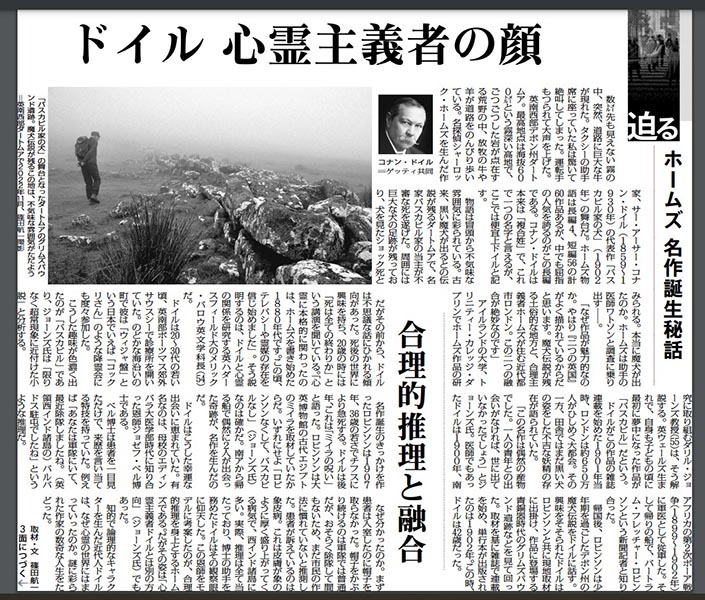
The girls took the photographs as a playful way to trick their parents by presenting ‘proof’ of the fairies they claimed to have seen. While stories of fairies had been told for centuries, it was the use of photographic technology that made this hoax so convincing.
The girls used simple techniques: they drew pictures of fairies, attached them to hat pins, placed them on the ground, and took photographs.
The original negatives were underexposed, but Edward Gardner had them ‘enhanced’ by Harold Snelling. Snelling was an incredibly skilled photographer and succeeded in making the fairies look spectacular, even airbrushing additional details onto their wings.
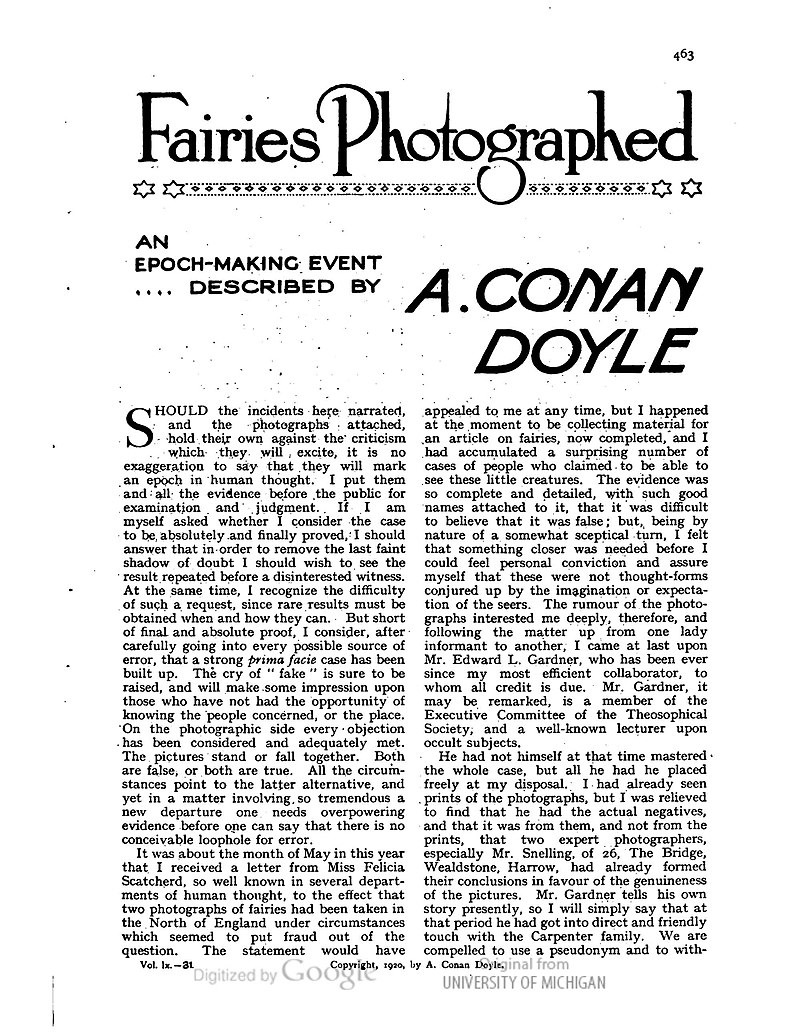
Conan Doyle, busy preparing for a lecture tour about spiritualism in Australia, didn’t have the time to investigate the photos himself. He delegated the task to Gardner, never meeting the girls or handling the original negatives himself.
Despite this, Conan Doyle wrote about the photographs as if he had personally verified them, and his involvement gave the hoax global credibility.
The lasting legacy of the Cottingley Fairies
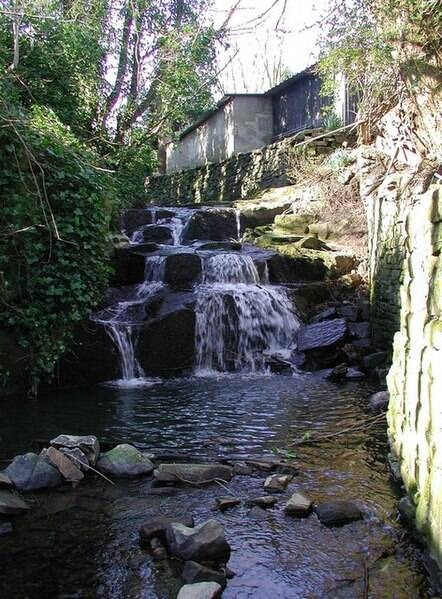
Over the decades, the world began to see the Cottingley Fairies story for what it truly was: a cleverly crafted hoax.
However, it wasn’t until 1983 that Frances Griffiths finally admitted that she and her cousin Elsie Wright had staged the images using simple paper cutouts and hatpins.
“I never even thought of it being a fraud,” Griffiths told the BBC at the time. “It was just Elsie and I having a bit of fun.”

Griffiths explained that the girls had copied illustrations from “Princess Mary’s Gift Book,” a children’s book published in 1914. They then added wings to their cutout figures and used hairpins to hold the “fairies” upright while they took the photos.
Even though their prank spiraled far beyond what they had intended, Griffiths had no regrets about creating the Cottingley Fairies.
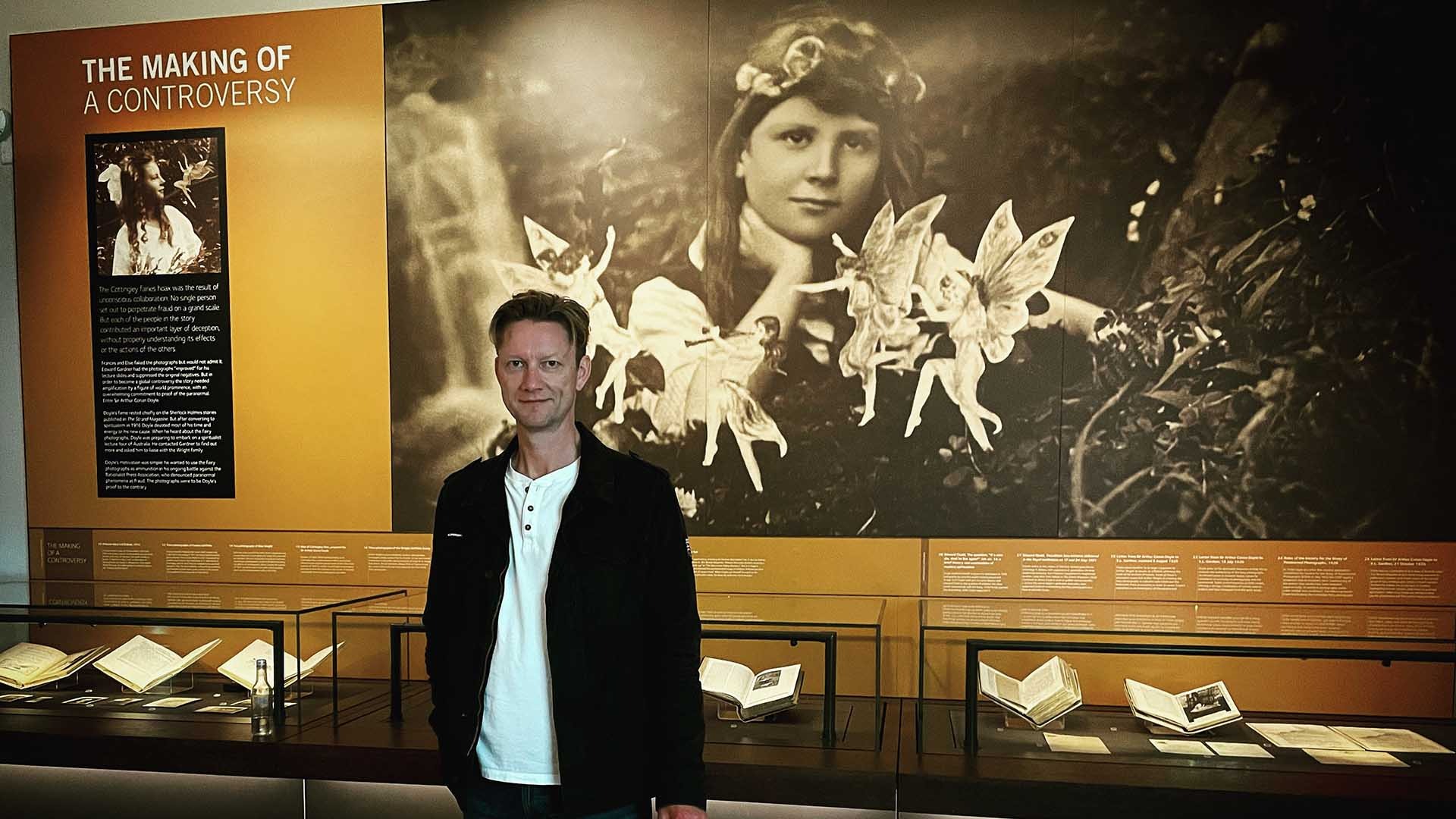
“People often say to me, ‘Don’t you feel ashamed that you have made all these poor people look like fools? They believed in you,’” she said. “But I do not, because they wanted to believe.”

